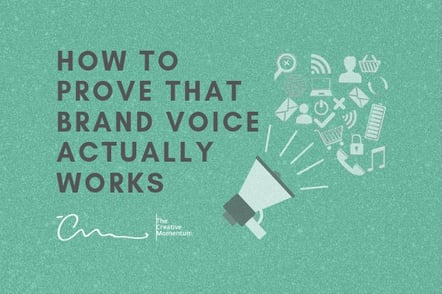
You’ve likely done some research on what it means to have an “effective” brand voice, but how can you be sure it’s resonating with your audience?
If you’re struggling here, don’t feel bad. Your brand’s voice is tough to measure. However, there are a few steps you can take to prove that your market is responding to what you’re putting out.
Start by Deciding On a Brand Voice
You might think your brand voice is all about your company and what image you want to portray. And in a sense, it is. But it’s also not.
Your brand voice is defined more by the needs of your target market than by your own aspirations.
For example, energy drink company Rockstar could have differentiated itself from its chief rivals—primarily Monster—by taking a unique marketing approach that separated it from its competitor (one that wasn’t based around extreme sports, sex appeal, and adrenaline).
However, Rockstar’s target market craved these elements. All the market research told them so. The company had no choice but to give in and sing the song its customers wanted to hear, turning itself into a billion dollar brand in the process.
The point is that, no matter what your brand’s goals, your corporate voice needs to speak the same language as your customers. This applies to what you say as well as tone.
How to Prove Your Voice Works
All of the above boils down to a single idea: Finding the right brand voice is a delicate balance of tweaking and has as much to do with your market’s goals as your own.
And as such, you need to lean on your market when trying to prove that your voice works.
Tap Into Focus Groups
One of the best ways to prove that your voice resonates with your market is to go to the source: Focus groups. Get in-person feedback from members of your target market to provide insights into what refinements you should make to your messaging.
Put together a series of focus groups that let you present some of your marketing materials to audience members and solicit their feedback. Collect all of these opinions and look for trends. Is your voice too firm? Too playful? If something is amiss, you’ll likely notice a pattern in the feedback.
Reference Cross-Department Customer Data
Another good way to track customer perceptions of your voice is to take their temperature across multiple touchpoints.
For example, customers who undergo a long purchasing process will likely speak to sales reps at various points in the sales cycle. Each customer will have a different feeling—a different perspective—about your brand.
Collect data from each department and compare notes. Are your sales reps noticing that customers aren’t responding to your marketing? Are you losing sales at the point of purchase due to inconsistencies in your messaging? Leverage your data and keep an eye out for these red flags.
Prove Your Voice through A/B Testing
The tried-and-true strategy of A/B testing can prove that your voice works. Your goal is to measure the engagement of each new post against a control to learn which is most effective. Here’s where you can put your metrics to work:
-
Unique page views for blogs
-
Social engagement metrics (likes, reshares, comments)
-
Percentage of visitors on mobile vs. desktop
Google Analytics is your friend, here. You can even leverage other strategies, such as referral links, to get a better idea of what types of content convert.
Review Customer Service Feedback
Don’t forget about the wealth of customer service data you have! This is a great way to learn more about customer perceptions of your brand voice, particularly in those who have already purchased.
Have your customer service reps incorporate some of these questions into their feedback surveys. Are customers satisfied with your product? Or do some of them feel as if you’ve misrepresented yourself?
Your brand voice “works” only if it’s an authentic representation of your company, from the first marketing touchpoint to your ongoing support.
If your customers aren’t happy, look at the style of communication you’re putting out and see if it’s creating intended expectations.
Make Sure Your Voice Is Tuned to Your Market
One last takeaway for you. If you’re using personality profiles or buyer personas to define your market, as you should be, you have a leg up on understanding what your brand voice needs to be.
The idea here is that you’ll be creating specific voices for each of your personality profiles. In terms of voice, think of these profiles as a framework to compare one voice to another. While this doesn’t provide a direct measure of your voice’s effectiveness, it helps keep your tone focused and consistent for each campaign.
When you consider the research showing that consistent brand presentation across all platforms can increase revenue by 23 percent, it’s clear that this structure is an essential aspect of defining—and proving—the quality of your brand voice.
Proving Your Brand Voice
The results may take some time. Don’t panic if you’ve recently committed to a rebranding and your new voice isn’t producing the results you were expecting. Particularly in cases of rebranding, audiences might be confused by the switch and may take some time to adjust.
What matters is that you stay consistent and structured with each change you make. Don’t just change your tone on the fly; for the best assessment, stick with the profiles you’ve built with your market research and monitor the progress of each new post.


